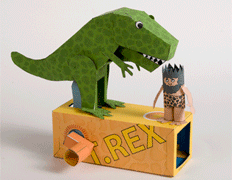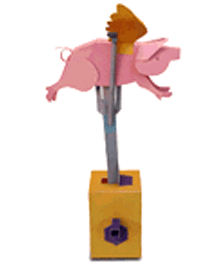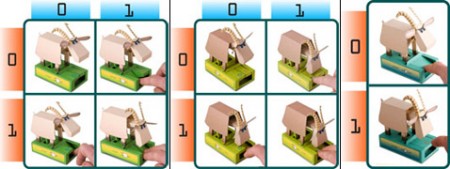Do it yourself: print it out and collect a pig for yourself ... that moves

The site http://www.flying-pig.co.uk/ offers interesting toys, familiar (in part) to all of us from childhood: paper models of animals and all sorts of things, ... but in this case the models are voluminous, and they also move.
It all started with the fascination of the British Rob Ives ( Rob Ives ) mathematics, which brought him to work as a teacher in elementary school. In 1993, when Rob, for reasons unknown to science, took and built two cardboard knickknacks. One is a dinosaur, the second is a “mechanical gentleman.” Both of them, with certain clicks on them, made some simple movements — the dinosaur wiggled its paws, and the gentleman raised and lowered his hat.

')
It was just for fun. But in 1995, at a conference of mathematics teachers, he still showed a door lock made of cardboard. Those present liked the thing, which made Rob incredibly happy. And it started ...
Rob began to invent new models, and in 1995 he wrote (and painted) the book Paper Locksmith ( Paper Locksmith ), in which he talked about his inventions and how they can be assembled on their own. Then he organized a small company under the cute name of Flying Pig - “Flying Pig” - in honor of one of the models.
And then he opened the eponymous site on which he began to advertise his products - both books and individual paper models.

The secret to the success of the Flying Pig is simple. The idea seemed very enticing to buyers - to children and their parents - the idea of assembling plain paper toys by themselves who know how to move funny. And in order to bring the device into action, it is usually necessary to push something on it or twist its handle. Very simple, but very exciting.
Models are inexpensive (relatively) - on average £ 2.5 - £ 3. However, there are free samples .
Membran source
Source: https://habr.com/ru/post/12483/
All Articles